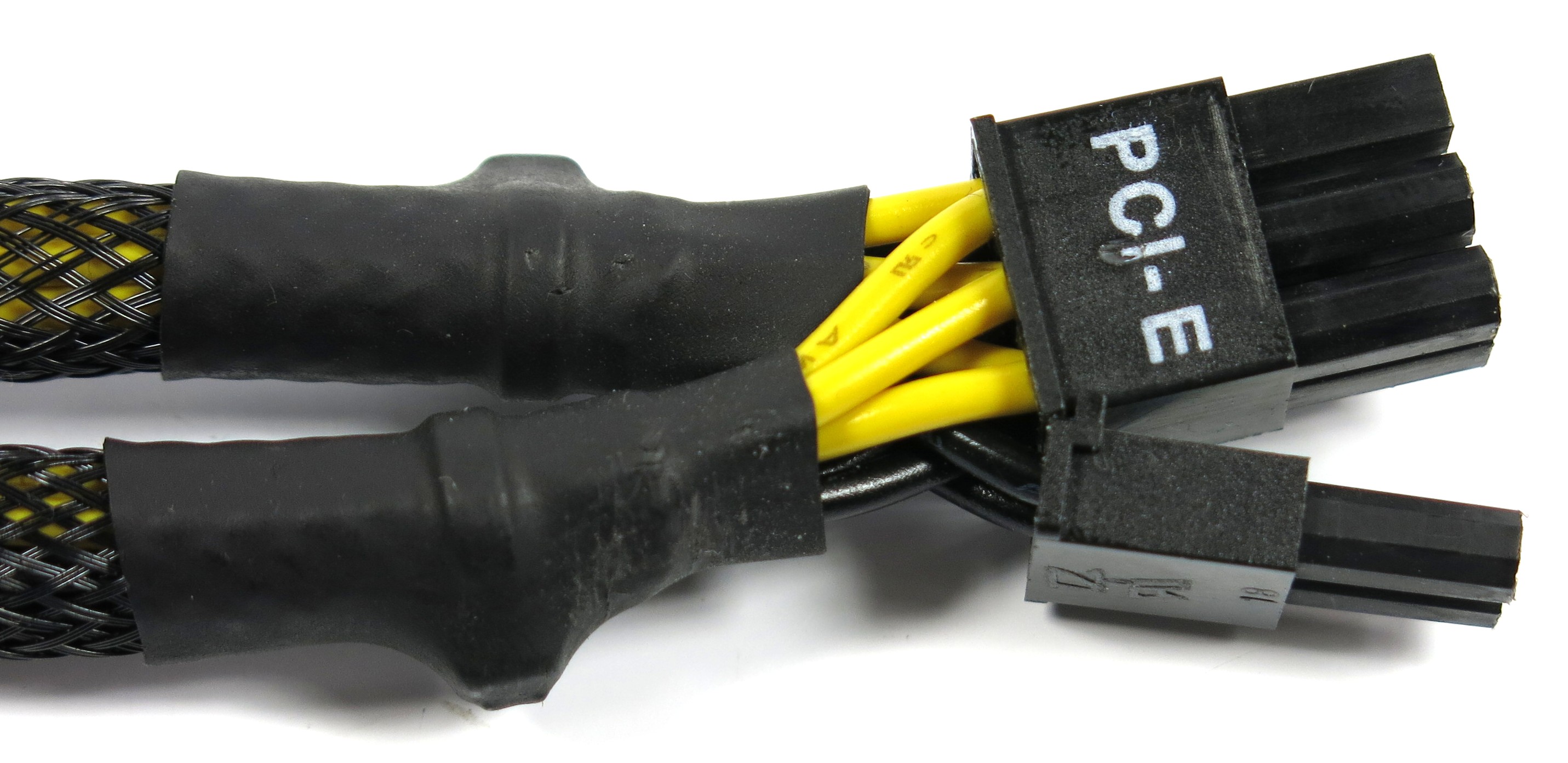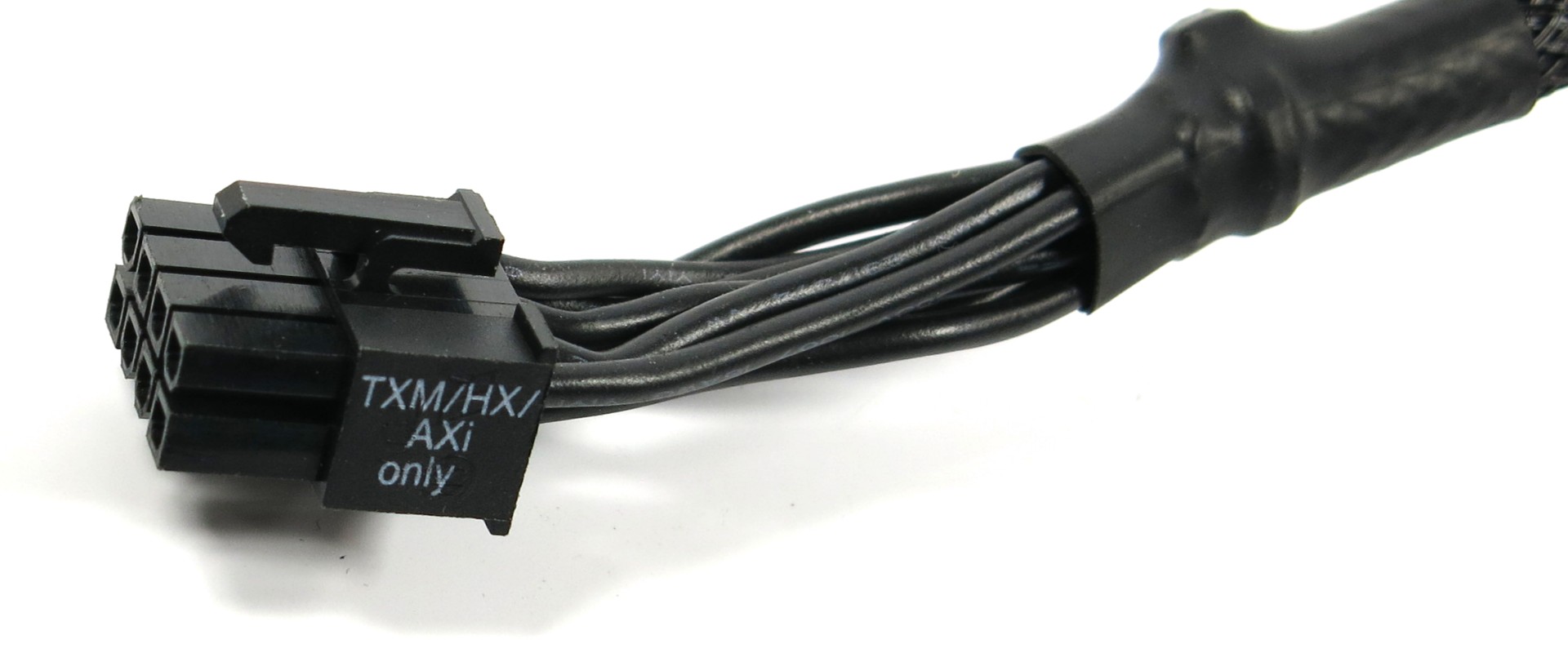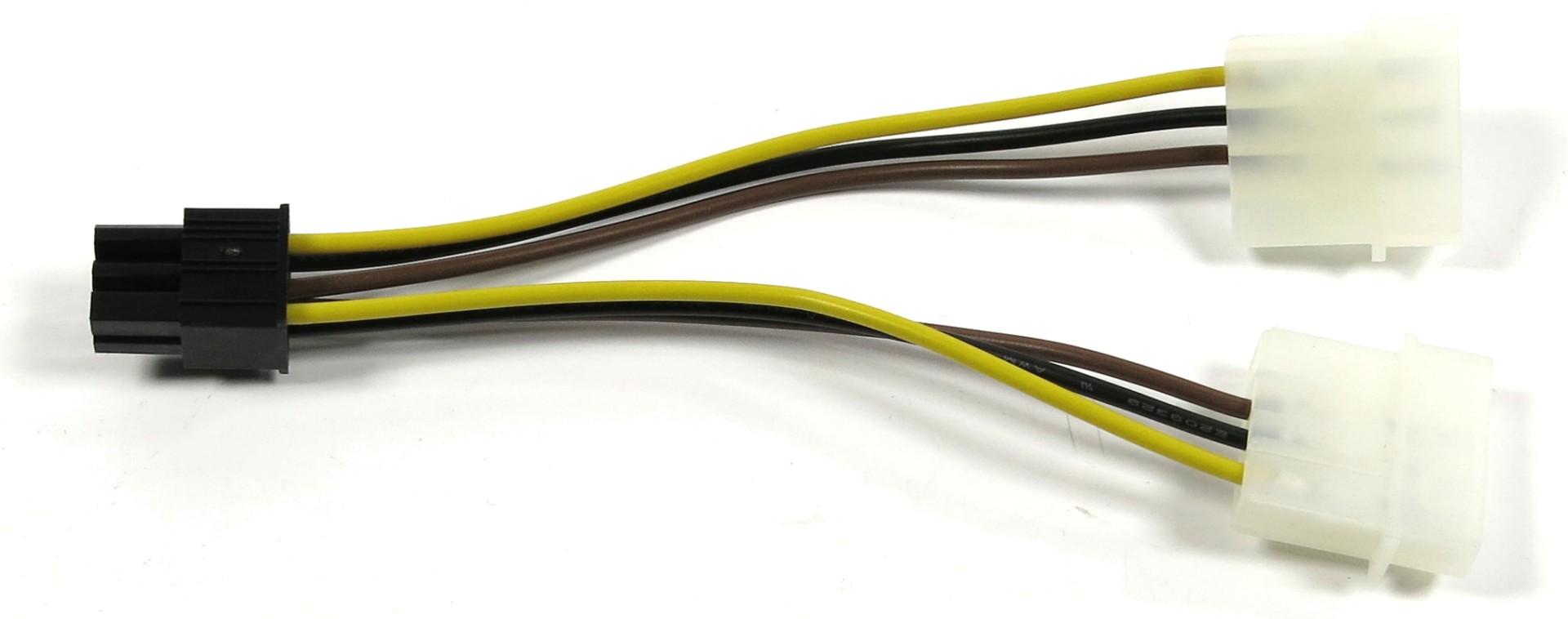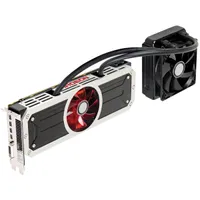The Math Behind GPU Power Consumption And PSUs
AWG: Cables Everywhere!
You should have access to a number of decent cables able to provide a good connection between your graphics card and PSU. But what does truly optimal cabling look like?
A question like that is really only interesting to enthusiasts using graphics cards with power consumption in excess of 200W. It also reminds us of the Radeon R9 295X2’s norm-busting twin eight-pin power connectors. But is the norm really so strict that exceeding it is dangerous?
What About AWG?
AWG became a more common term in the PC world with the introduction of AMD’s Radeon R9 295X2. But what does it actually mean? In 1857, James Buchanan succeeded Franklin Pierce as president of the United States, Elisha Otis' first elevator was installed and the AWG standard was created.
AWG stands for American Wire Gauge. It's a coding scheme for wire diameter, only used in North America, very inflexible and hasn’t been updated in ages. But AWG remains a quasi-standard, and there’s really no way around it when it comes to this kind of cable. If you enjoy calculating everything for yourself, the following table includes the AWG norms applicable to our PSU discussion.
| AWG | Diameter (Ø) in mm | Cross Section in mm2 | Equivalent mm²(Metric) |
|---|---|---|---|
| 16 | 1.29 | 1.305 | 1.5 |
| 18 | 1.02 | 0.79 | 0.75 |
| 20 | 0.81 | 0.51 | 0.5 |
Does AWG 20 Even Make Sense?
Let’s start with the thinnest wires. At a room temperature of 25 degrees Celsius, at an average cable length of 55cm and assuming that the cable won't exceed a temperature of 50 degrees Celsius, even the thinnest AWG 20 cables still carry up to approximately 10A per wire. Three supply lines add up to a respectable 360W, which would be sufficient for an eight-pin connector.
As usual, the devil’s in the details. In this case, the cable temperature is way too high. That’s why an AWG 20 cable should only be considered for PCIe power connectors of up to approximately 150W. A single six-pin or eight-pin graphics card power cable would be perfectly fine.
AWG 18: One Size Fits All
Theoretically, AWG 18 should be sufficient for anything between the PSU and graphics card, which is why this size is the most common. A single AWG 18 cable with two eight-pin connectors from a respected PSU vendor driving AMD's Radeon R9 295X2 yielded good results in our trial.
Get Tom's Hardware's best news and in-depth reviews, straight to your inbox.
It’s important to pay close attention to the construction of your PSU though, since there can be massive differences between manufacturers and their models. Unfortunately, we've found unserviceable solutions, as you'll soon see. Some makers of cheap PSUs even try to trick their customers with exceptionally thick insulation, resulting in the cable only looking like it has thick wires.
AWG 16: One Cable To Rule Them All
Very few PSUs offer AWG 16, since it's so much more expensive. Using AWG 16 cables is not really necessary, even if they do help to reduce cable temperatures in high-end systems, improving efficiency. AWG 16 is only worth the extra investment if high currents are going to flow through the cables. Of course, those who place big value on aesthetics and would rather forgo the second cable are on the safe side with AWG 16.
What Could Go Wrong?
Let’s take a look at a cable with two eight-pin leads, which should be able to carry 300W (2 x 150W), according to the ATX specification.
The additional ground wires come right out of the connector, and the second connector is more of an extension cord than anything else, which means that it doesn’t have its own wires. Consequently, this cable consists of just three 12V wires and the ground. At least in theory, the wires do have enough diameter to serve their purpose. But, practically speaking, the pairs of wires twisted together in their connectors are a huge source of potential problems.
Looking at the interface to the PSU itself is even more interesting. Everything terminates at a single six-pin connector. Even though the power supply's specifications state that this connector is rated at 20A (240W), and the PSU does shut off, just as it should, beyond that number, a pair of eight-pin connectors on the other end suggest 300W. Simply, this isn't possible due to the multi-rail PSU’s OCP, making the cable configuration all bark and no bite. Unfortunately, the kind of problems shown here reappear in many variations with other PSUs and their cables.
Good Solutions And Better Solutions
Usually, combined cables like these should, at the very least, have a solid eight-pin connector on the PSU. A good example is depicted below. The manufacturer decided to go with all-black cables for aesthetics. This doesn’t matter to you or I, but the manufacturer incurs higher failure rates because the cables are harder to distinguish and identify correctly.
The ideal would actually be to just have an individual cable for each PCIe power connector. That's eliminate all of the problems posed by too-high currents and fast load fluctuations in one fell swoop. AWG 16 cables with a pair of eight-pin connectors and at least eight-pole PSU connectors fall in the same category of supremely usable.
So What If The Cable Gets Warm After All?
This means that the manufacturer cut some corners with regard to copper pureness (and your safety). Most of the copper for these cables comes from recycled raw materials, which of course isn't a bad thing in and of itself. However, internal tests by PSU manufacturers show that using alloys containing aluminum, magnesium or zinc are popular ways to keep prices low.
The strands can get brittle this way, which makes for cables that aren’t very flexible. AWG 20’s usual safety reserves aren’t sufficient anymore in this case, and the whole thing turns into a gamble.
Just Don’t Use Them Ever Again: Adapter Problems
Graphics card manufacturers keep including adapters for the sake of convenience, but they just shouldn’t be used anymore. They’ve outlived their usefulness in light of GPU Boost and PowerTune technology. Moreover, good PSUs are available without breaking the bank.
At the same time, PSU manufacturers don't include second or third PCIe power cable if their products aren't able to deal with the load anyway. Missing connectors are always a warning sign of insufficient performance, even if the label sports a fantastic wattage rating.
The dual adapters are just rubbish, since all roads lead back to the same single 12V source in the end. A PSU shouldn’t be pushed to provide something that it doesn’t have. The only exceptions are PSUs from OEM systems, some of which might sport enough capacity, but corners were cut by whichever big-box store assembled the system. These need to be looked at very thoroughly before use, though.
Current page: AWG: Cables Everywhere!
Prev Page Is AMD's Radeon R9 295X2 A PSU-Killer? Next Page Switching Sides: A Look Inside The PSU
Igor Wallossek wrote a wide variety of hardware articles for Tom's Hardware, with a strong focus on technical analysis and in-depth reviews. His contributions have spanned a broad spectrum of PC components, including GPUs, CPUs, workstations, and PC builds. His insightful articles provide readers with detailed knowledge to make informed decisions in the ever-evolving tech landscape
-
Vorador2 Man, everytime i'm truly fed up with Tom's posting news that read as press releases, and badly written opinionated pieces, a jewel of a deeply researched original article shows up.Reply
Thanks for reminding me of the reasons i started reading Tom's Hardware. -
FormatC It is always difficult to break down the complex content to find an understandable level for all. We may lose a lot of information by this way (and some experts and nitpickers will kill me) or write boring and extra dry stories for a handful of readers without simplifications. It is always hard for us to find a good compromise.Reply
This equipment, shown in the review, is a good basement for a lot of other in-dept reviews in Germany, like the efficiency analysis of Nvidias GeForce GTX 970. You simply need exact numbers to do this. :D
I've also visited PSU manufacturers in Asia this year and this VGA-PSU problem is now more in focus...
But all this are another stories and I hope, that we get for all this more translation capacity here in US/UK. If not: it is a good reason to learn German :D
-
gofasterstripes Tom's Hardware delivers another piece of technical journalism at the gold standard.Reply
Well done to all involved, thank you. -
s3anister This was an excellent read; thank you for the incredible amount of work done for this article.Reply -
justin2003jclc Hi Toms Hardware,Reply
Can you clarify on your rule number3 ? Do you means that most of the PC PSU in the market are linear power supply when you mention about analog? Do you mean that there is only minorities of PC PSU available in the market are using switching power supply design? -
This is GOLD! Kudos to Igor for writing such a superb article. I hope he makes all the PSUs he reviews, undergo the same tests. Can't wait for his PSU reviews :)Reply
-
pecul1ar Congratulations on finishing this year long experiment, and thank you for sharing us your findings. This must have lifted a load off your shoulders..Reply
Oh, so this was translated? Thank you for that as well :) -
NoShot So, my take away from this is my PC builder (will not name here but is one of the larger ones offering custom builds) mislead me on their configuration setups when they said a Corsair RM850 PSU would be fine for a r9 295x2 and a i7 4970k. Not surprisingly, I am having random issues with this build where the 29 295x2 would only activate one GPU after system reboot or awake from sleep mode. I was thinking it was a driver issue, but looks like I need to drop a couple hundred dollars on a replacement PSU.....great. Genuine thanks for the article though.Reply







